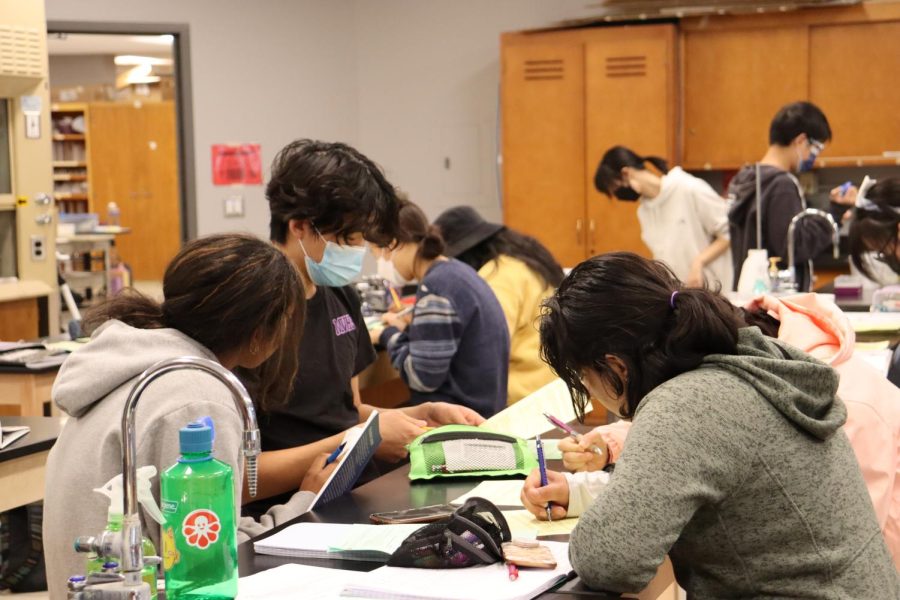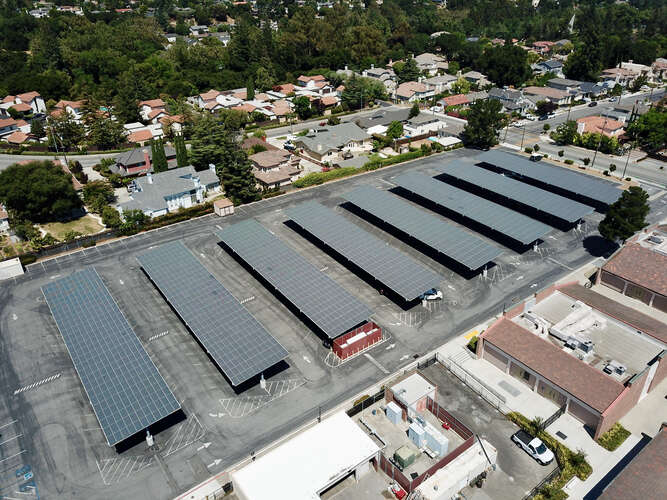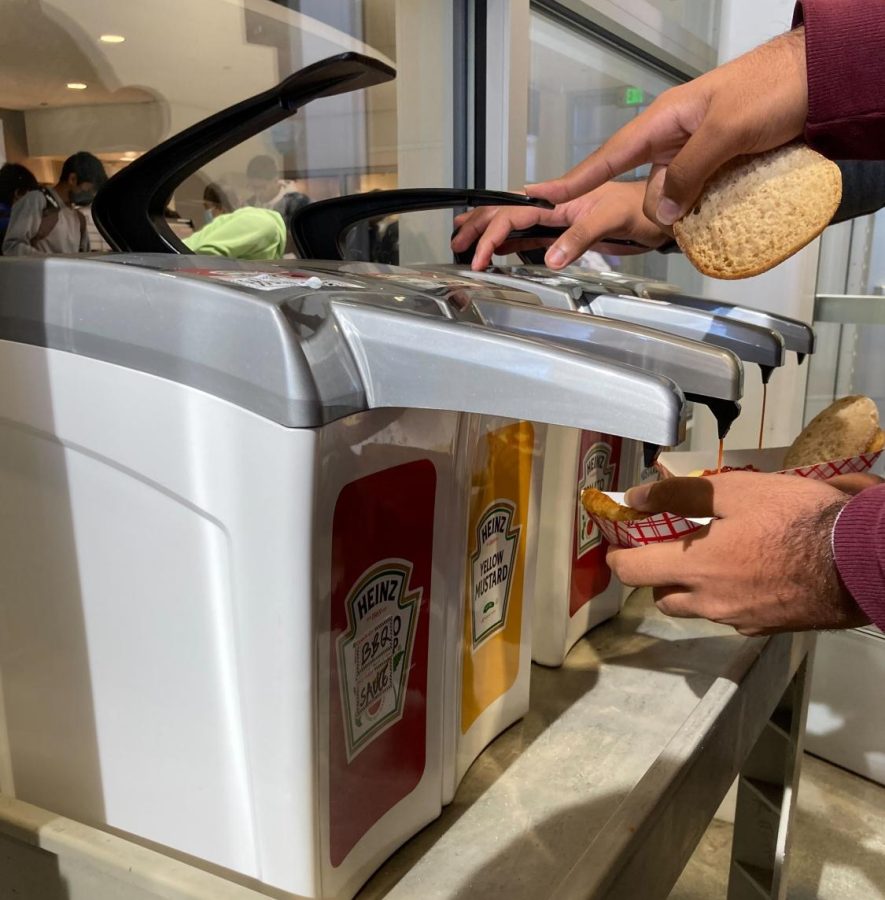Wrapped in green
Examining FUHSD’s Green Ribbon Schools application process
November 16, 2022
FUHSD applied to be part of the U.S. Department of Education Green Ribbon Schools (ED-GRS), a federal recognition award that promotes sustainability in schools, on Nov. 2. According to the U.S. Department of Education, the award highlights schools and districts’ “cost-saving, health-promoting and performance-enhancing sustainability practices.” Superintendent Graham Clark says applying to ED-GRS helps FUHSD schools be more responsible about their environmental goals.
“[ED-GRS] is a way to hold ourselves accountable to the resolution that we had,” Clark said. “I think among the younger generation, there’s a passion like we have to do something now to help the planet, or the world that your kids or grandkids inherit, [because] it’s not going to be as good as the world that we have now.”
One group of students and adults fighting climate change — the Silicon Valley Youth Climate Action — presented a Climate Action Plan to the FUHSD Board in March 2022. Senior Darren Chiu, a member of the SVYCA, says applying to ED-GRS could be a significant step towards some of FUHSD’s Climate Action Plan goals.
“We wanted to persuade the FUHSD board to allocate more funding for climate education and stuff like that within FUHSD,” Chiu said. “We thought that’d be very important in helping spread awareness and showing people how to participate in climate advocacy.”
The ED-GRS focuses on three main aspects of school practices to determine eligibility for the award: one, energy efficiency through school facilities and sustainable transportation options; two, the health and wellness of students and staff; and three, sustainability education about environmental issues.
Reduced Environmental Impact and Costs
The district currently practices energy efficiency through solar panels and electric vehicle chargers in student parking lots, with solar panels generating 40% of power throughout FUHSD schools. While working on the application, however, Clark noticed that many of the schools with Green Ribbon Schools awards generate 50 to 60 percent through solar.
Clark is considering two methods to increase that number — installing more solar panels or replacing the current solar panels installed 12 years ago with newer, more efficient ones. According to facilities and bonds manager Roger Silveira, modern solar panels are twice as efficient as current panels, meaning the district could offset 80% of energy production with this change.
In addition to solar panels, Clark believes modernizing classrooms can help improve sustainability. With the passing of Measure G, FUHSD received a $275 million school bond to renovate their campuses, allowing the district to make many improvements, including the transition of gas heaters in classrooms to electric heaters.
Prior to Measure G, modernizing toilets and urinals to low flow has helped the district drastically decrease water consumption from 50 million gallons to 25 million over the last ten years. According to Silveira, a large part of that is due to the switch from grass fields to turf.
The district also installed water bottle filling stations around campuses to reduce waste and is currently working on improving recycling at schools. Silveira encourages students to take the initiative and encourage recycling in their schools.
“I can help support [students] with equipment, but as far as changing the culture, that’s something that the students will have to engage in,” Silveira said. “Change the culture to make recycling a norm, [even if] it’s not convenient.”
Improved Health and Wellness
In school cafeterias, FUHSD’s priorities have been reducing plastic and food waste. According to District Manager of Food Services Divya Puri, the school has made a few changes to achieve this goal, including switching from individual condiment packets to dispenser pumps, and creating “sharing tables” for students to place food they do not plan to eat.
Besides decreasing waste among students, Puri mentions schools have a systematic approach to dealing with leftovers. When students take food from the cafeteria, the school scans their IDs and counts the number of students, allowing the district to judge the amount of food that should be produced each day.
However, Puri states that some changes are relatively recent, and are not fully implemented at the time of the ED-GRS application.
“[Placing dispenser pumps] is still in progress because we still have individual [condiment] packets, so we’ve not taken them off completely,” Puri said. “As for compostable utensils and serving ware, we were trying to do that all last school year, but because of the supply chain issues arising from the pandemic, [the school was] not able to procure anything.”
Puri says that although they now have more access to compostable utensils, they are sometimes unavailable, and schools are forced to use plastic instead. She believes that applying to ED-GRS is a “great initiative” but wishes that there were “more resources to make [the changes] happen faster.”
Effective Environmental and Sustainability Education
According to FUHSD science curriculum lead Kavita Gupta, the district has “pockets of great work in environmental literacy,” but she finds it is not consistent across all five schools.
“There are many teachers doing amazing things with their students, but it might be done in one class at one high school, and at another four high schools, a similar program doesn’t exist,” Gupta said. “Not every Fremont Union High School District student is getting exposure to that. We are at that phase where we’ve identified that in some classes, students are receiving environmental sustainability education, but not in all classes.”
Moving forward, Gupta believes it is most important to study the current situation to create plans for improvement.
“The part we are at is that self study part,” Gupta said. “What are our practices? What are we even doing with regards to sustainability and environmental education? And we got good, good data, and we have some ideas.”
Chiu believes the climate change unit in ninth grade biology is adequate in informing students about the scientific side of climate change but wishes the district implemented additional climate advisories about how students can directly influence climate advocacy like he’s seen in other schools in Silicon Valley.
“While there are a lot of opportunities for high school students to participate in science research, the more direct and easier way that everyone can participate is with climate advocacy,” Chiu said. “That could be anything from advocating to other people [and] students through their own form of education, or attending county or city meetings, and providing their opinion … If more people participate in sharing what is important to them, then legislators can have a better idea as to what needs to be passed.”
Gupta says FUHSD does not have an official board resolution regarding sustainability education. She sees ED-GRS as an opportunity for the district to make vital changes for the future.
“Personally, the benefits will be bigger than any award that can come for tomorrow,” Gupta said. “You and your children will have a sustainable planet to live [on]. You will have clean air, you will have water security, you will have food. That to me is the biggest award that anything can give. [This application] is not about [winning] an award. It’s about doing a practice that keeps our only home, Earth, alive for generations to come.”



